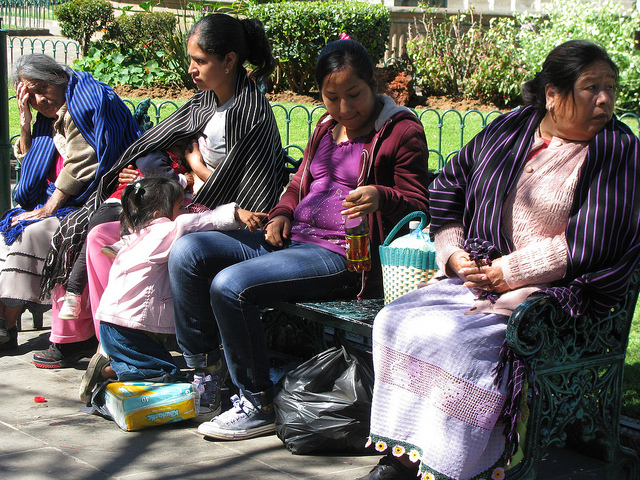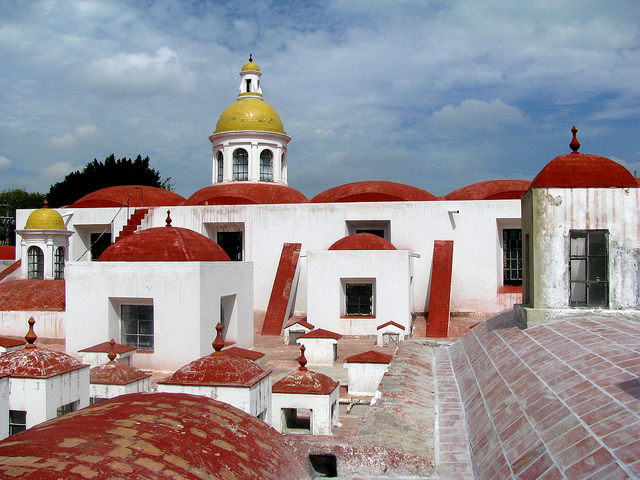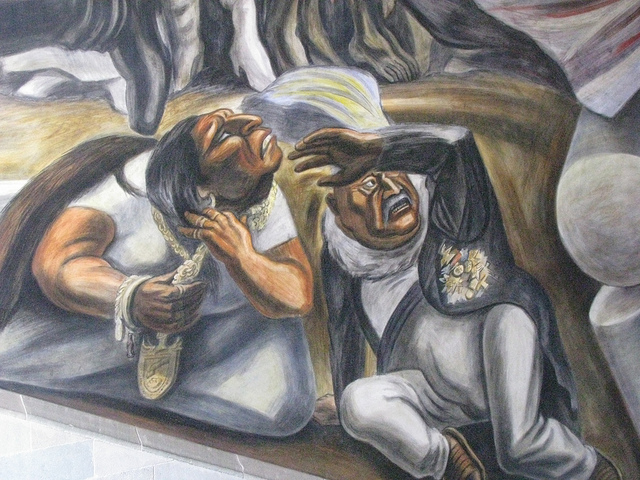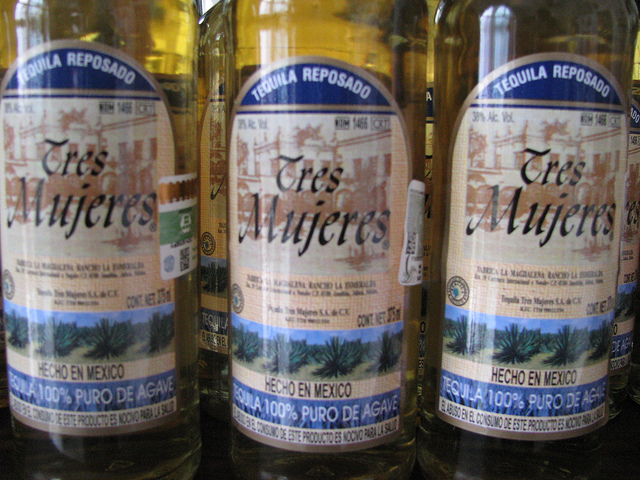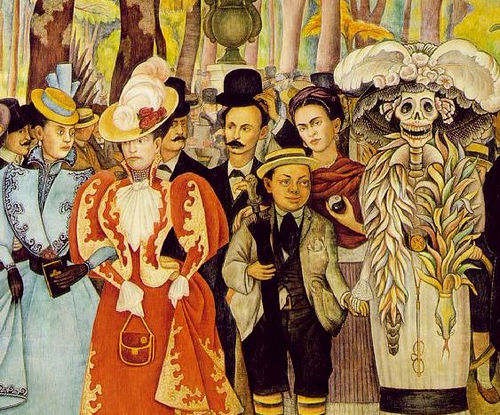Our first stop was in the country town of Quiroga, a historic trading post that was settled during Prehispanic times. The town was officially established in 1831 and its main street is a colourful collection of stores and stands that sell many different handcrafted items, from wooden carvings to miniature guitars, leather goods and earthenware. Quiroga is a bright kaleidoscope of Mexican arts and crafts.

Colourful guitars for sale in Quiroga
One of the biggest attractions in town are the “carnitas” vendors. At their street stands they sell slow-roasted pork that, still dripping with fat, is rolled up in tortillas. We stopped at one of the most colourful street vendors from “Carnitas Carmelo”, and the gentleman quickly gave us two free samples of this succulent local delicacy. He was very gregarious, insisted on having a picture taken with me and sent a greeting out to all the expatriate Mexicans in the United States who can now order his carnitas over the Internet.

Carnitas Carmelo, to the right my expert guide Rodrigo Muñoz
We walked by several carnitas stands, most of which featured the last name “Carmelo”. Apparently the entire extended Carmelo family is in the carnitas business. Rodrigo explained that “tripa” (intestines) is also a popular street food. Some street vendors offered “barbacoa”, barbecued beef with various optional condiments. “Chicharrones”, fried pork skin, is another popular local snack. We also had a look at a boiling pot of “morcilla” (blood sausage).

Orange juice is squeezed manually in Quiroga
Fresh juice was being squeezed manually from recently picked local oranges. Rodrigo also explained another dish to me: “corundas”, which are corn-leaf pockets that are eaten without meat but with tomato sauce and sour cream, similar to a “tamal”. Although I usually eat mostly vegetarian cuisine, I have to admit the carnitas were absolutely delicious and I can see how someone can get hooked on them.

Purepecha ladies sitting on the main square of Quiroga
The colonial facades on the main square were facing an open area with a garden and a grandstand. Local native women from the Purepecha tribe were sitting on benches around the square, showing off their traditional colourful dresses. Then we walked on to a side street where we visited the fruit and vegetable market. Rodrigo introduced me to a collection of Mexican fruits, some of which I had never seen before.

Delicious looking star fruit
“Carambola” for example, is the orange-coloured star fruit, which is usually cut open and eaten with yoghurt. “Granada” is a tropical fruit from China that, when opened up, reveals a slimy greenish ball in the middle that supposedly is very sweet and tasty. Even Mexican apples were on display and Rodrigo added that they were sweeter and juicier than the apples from northern climates.

The unusual painted ceiling of the church in Quiroga
Steps away we stopped at the parish church of Quiroga where a mass was being held. The building itself was rather simple, but it had a fascinating wooden ceiling that was hand painted with numerous square pictures of Catholic symbols and images. Outside the church was a street market that featured all sorts of handicrafts, clothing and souvenirs. The locals were out in full force, shopping for all the necessities of life. As far as I could tell, I did not see any other tourists in Quiroga. This town will give you a great look at real daily life in Mexico.

Brightly painted wooden platters in Quiroga
From Quiroga we drove to our next destination: Tzintzuntzan, the former capital of the ancient Purepecha empire.
